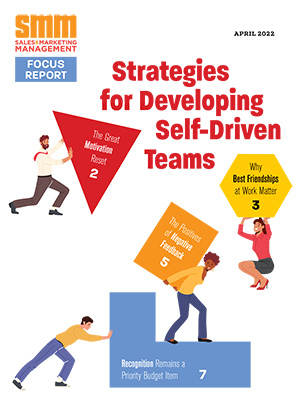In the context of content marketing, a product-agnostic approach is one that focuses on your expertise and knowledge around a product, technology or service rather than your brand. This kind of content positions you as a thought leader in a given field or industry, does not contain a sales pitch, and should never mention your company or brand except as the source of the content.
4 Examples of Product-Agnostic Content
The product-agnostic approach to content marketing has been around for a long time. If you’re not already implementing it in your content marketing strategy, then you’re missing out on a huge opportunity to reach potential customers while positioning yourself as an expert in your industry.
In the B2B space, product-agnostic content manifests in a variety of ways.
Whitepapers
Companies in industries like healthcare, security, aerospace, technology and finance have long used unbranded content to curate leads while educating prospective clients on what are often complex, highly technical products and services.
Example: This whitepaper from Cypress Integration, a company that designs and manufacturers security products and technologies, contains detailed information about new developments in Radio Frequency Identification (RFID) technology – a key technology in this industry. There’s no overt branding in this whitepaper. Cypress includes their company’s web address in the footer on each page and their logo and contact information on the final page.
Instructional Videos
Instructional videos typically feature more prominent branding than whitepapers, but the bulk of information contained in these videos is focused on helping viewers learn about something or solve a problem.
Example: This video by Gavin Bell, a Scotland-based Facebook Ads specialist, features 14 minutes of Gavin explaining how viewers can create and launch a Facebook ad campaign. The video opens with a screenshot of Gavin’s Facebook page which disappears after 40 seconds or so. There is no other branding or self-promotion beyond a link to a free eBook below the video and Gavin’s name (highlighted in yellow, below).
Creators can include a lot of information beneath each video, but it’s important to put a compelling incentive and/or promotional link first since YouTube cuts off the majority of this text.
Blog Posts and Articles
Contributing high-quality content to industry websites should be an integral part of your product-agnostic content strategy. For example, if your company caters to clients in the finance industry, it behooves you to publish something in Forbes.
Example: This article by Kris Putnam-Walkerly, a global philanthropy advisor, is aimed at helping foundation board members ensure the CEO’s objectives are in line with the foundation’s. The author’s byline links to her business website and a book she’s published. There’s also a thumbnail image of the author beside her name and a one-line bio at the top of the piece. In this case, the author is the product since she’s selling readers on her expertise.
Webinars
Companies use webinars to educate prospects, showcase their expertise and get leads. Webinars can be hosted on a company’s website or on a third-party site such as Zoho, GoToMeeting or Zoom. Live webinars are a great way to motivate new prospects to tune in “now”, while recorded webinars can be used to showcase your expertise and generate ongoing awareness about your business, product or service.
In DemandWave’s 2017 State of B2B Digital Marketing study, respondents indicated that Webinars drove 37 percent of their company’s revenue (side note: putting out proprietary research such as “State of the Industry” reports is another great product-agnostic marketing tactic).
Example: This webinar by OneDrive, Microsoft’s file hosting and synchronization service, was recorded live to a streaming audience then posted to YouTube. The focus of the Webinar is using OneDrive for business. The video is essentially a tutorial, but also serves as a great promotional tool aimed at business consumers. With over 100,000 views, it’s clearly something that users are interested in.
Your Product-Agnostic Strategy Should be Platform-Agnostic
Your audience is already product agnostic when it comes to where they get their content. They’re also platform-agnostic and device-agnostic.
I watch YouTube videos in my living room, on my smartphone and on my laptop. I get my news and headlines from Twitter, Facebook, Google, and LinkedIn (to name a few).
It’s notable that companies like Google that have traditionally existed to send traffic to other sites, are increasingly developing strategies to keep visitors from leaving. There are many examples of how Google is featuring content on its search results pages rather than referring traffic to the source of the content (e.g., weather results, sports scores, definitions, etc.).
The best way to counteract this trend of siloed traffic among the top digital players is to make sure your content-distribution strategy is as diverse — and agnostic — as the content you create. Put content everywhere your visitors go and promote this content across platforms (Facebook, LinkedIn, Twitter, Instagram, YouTube) and devices (hint: it should be mobile-friendly and responsive).
Yes, your brand probably has a great story and your product may be top of class, but when it comes to really setting yourself apart as a respected expert in the eyes of those who know little about you (top of funnel leads), attract them with what you know, not what you say about yourself. A comprehensive product-agnostic content marketing strategy should be at the top of your to-do list for 2019 and beyond.
Ryan Gould is vice president of strategy and marketing services at Elevation Marketing. He helps brands achieve their business goals, such as improving sales and market share, by developing integrated marketing strategies distinguished by research, storytelling, engagement and conversion. Follow him on Twitter at @ryanscottgould.


